Mission to the Moon
After identifying water molecules on the moon, NASA is sending a rover to the lunar surface to gather more information.
The article first published in the 2022 edition of Highlights: A Magazine of Research, Scholarship and Creative Activities at SDSU.
SDSU environmental engineer Aina Narvasa interned at NASA’s Glenn Research Center in Cleveland, Ohio this summer. The second-year master's student worked on the Volatiles Investigating Polar Exploration Rover (VIPER) project, which aims to send a rover to the south pole of the moon to investigate the concentration of water ice there. (All photos courtesy of NASA)
Narvasa sets up terrain similar to the moon’s surface in order to test the rover's navigation capabilities. (NASA)
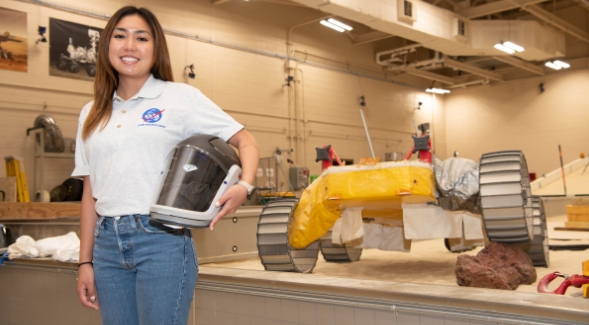
As Narvasa smiles for the camera, the rover poses with one wheel perched upon a rock. (NASA)
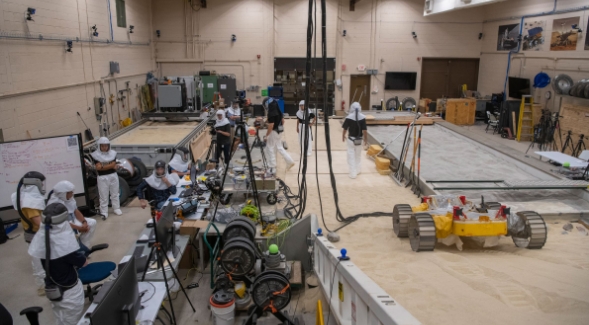
Inside of the cavernous Simulated Lunar Operations Laboratory at NASA’s Glenn Research Center, the VIPER team readies for their experiments wearing respirators to protect themselves from silica in the air during testing. (NASA)
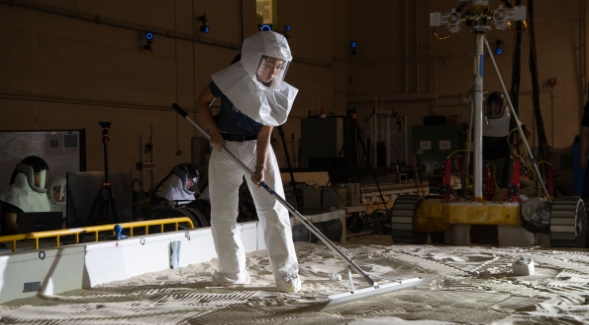
Narvasa rakes one of the sandpits prior to a mission test, approximating one segment of the surface features VIPER will encounter during one of its two-week-long routes. (NASA)
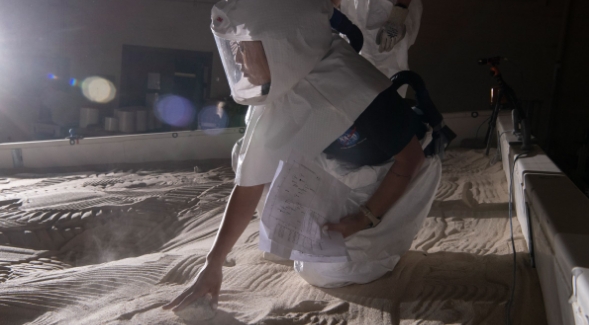
Narvasa places a rock which VIPER programmers will have to avoid. If an obstacle stops the rover in its tracks or breaks a component, the mission - many years in the making - will end. (NASA)
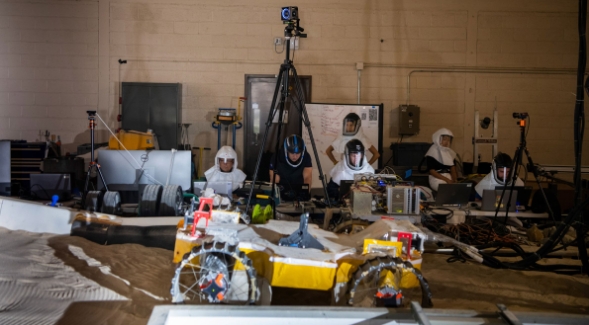
Narvasa and her coworkers monitor computers and video feeds while VIPER traverses terrain. They gather data on the speed and movement of the rover’s tires and of the soil. (NASA)
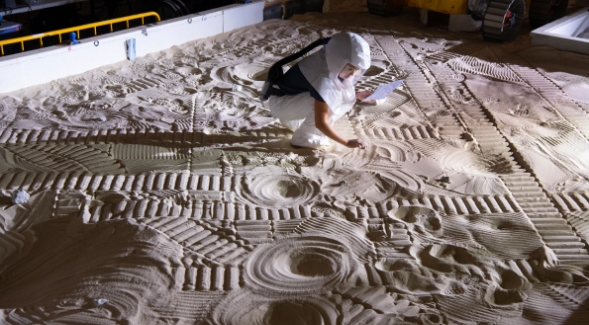
Narvasa follows a map with measurements of where different sized craters and rocks are going to be precisely placed. (NASA)
Narvasa and her fellow NASA interns rake and shovel the soil to prepare for another test. (NASA)



